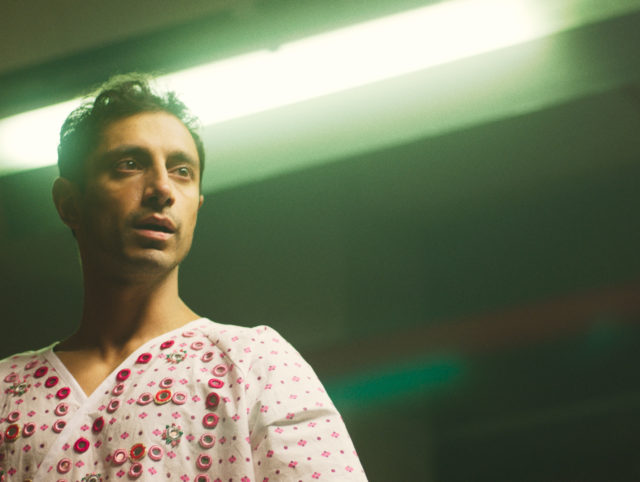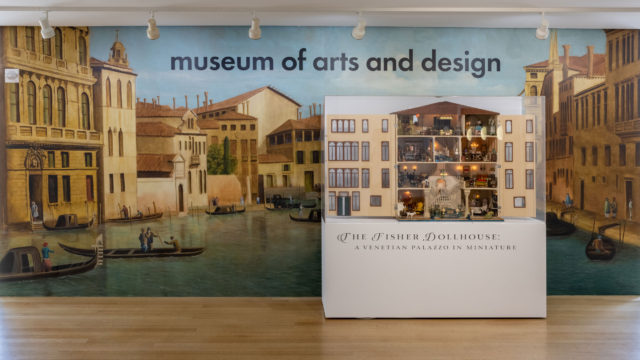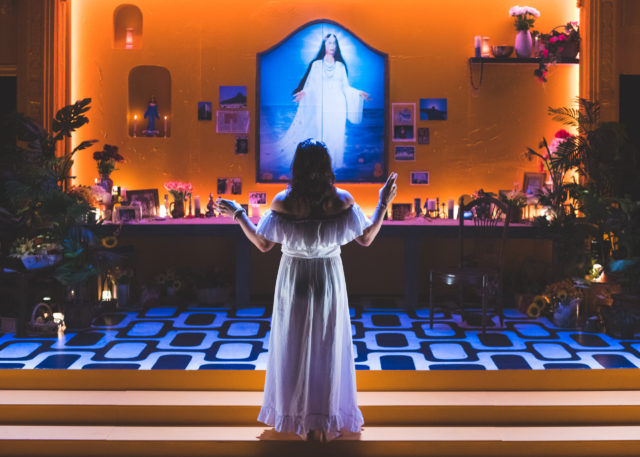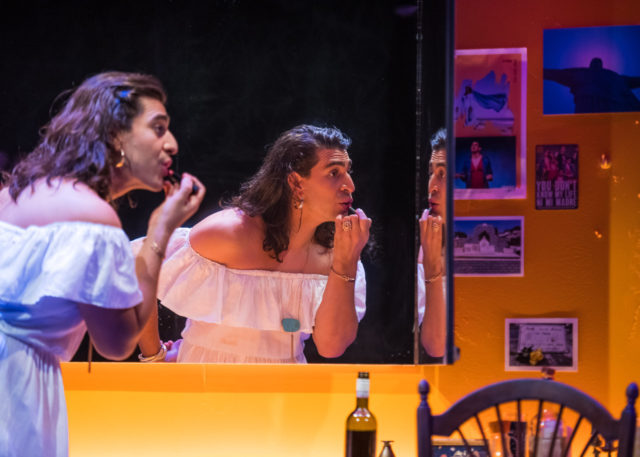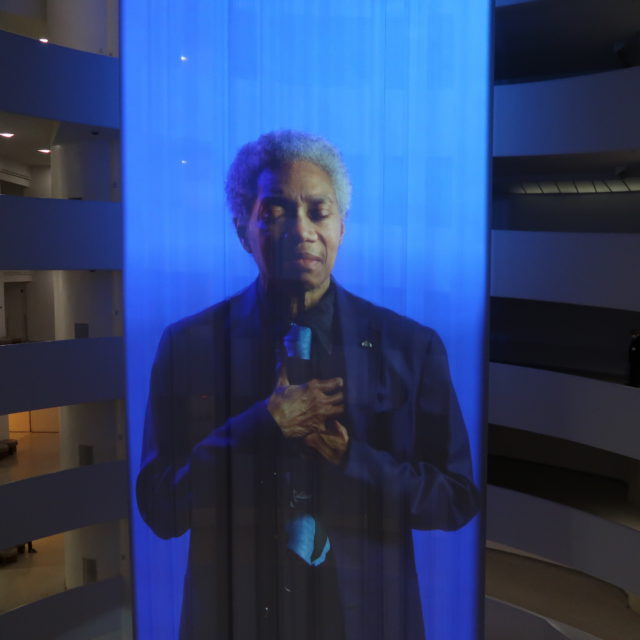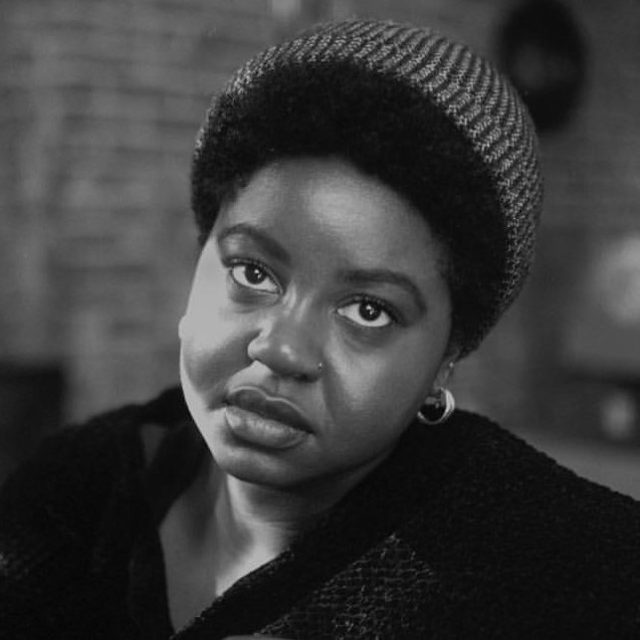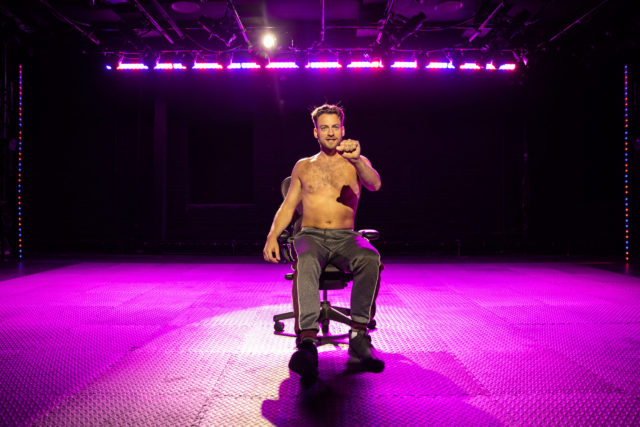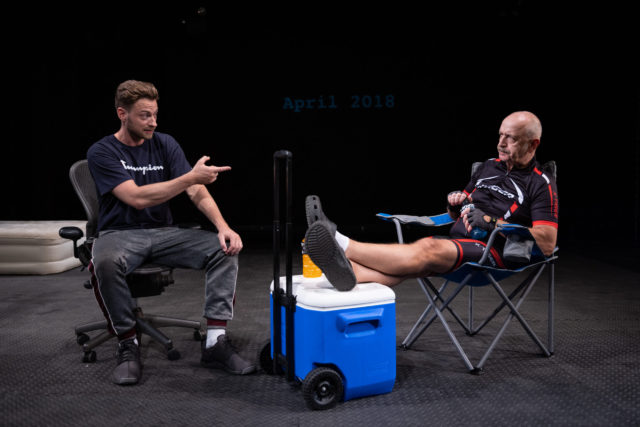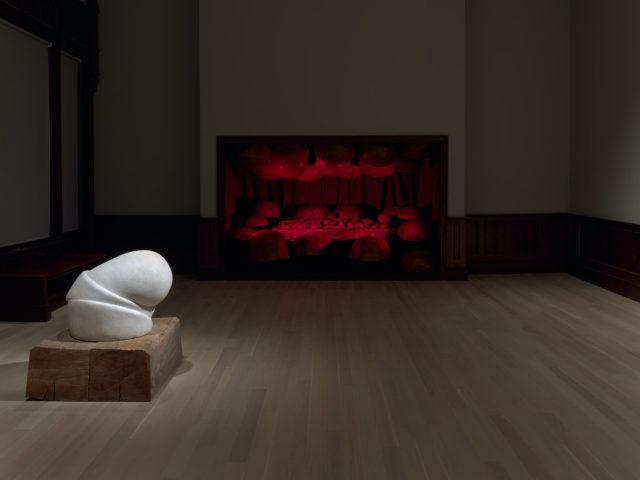
“Louise Bourgeois, Freud’s Daughter” continues at the Jewish Museum through September 12 (© The Easton Foundation/Licensed by VAGA at Artists Rights Society (ARS), NY. Photo by Ron Amstutz.)
LOUISE BOURGEOIS, FREUD’S DAUGHTER
The Jewish Museum
1109 Fifth Ave. at 92nd St.
Thursday – Monday through September 12, $12-$18 (free on Saturdays)
212-423-3200
thejewishmuseum.org
To paraphrase something Dr. Sigmund Freud most likely never said, sometimes a white marble penis is just a white marble penis. In the exhibition “Louise Bourgeois, Freud’s Daughter,” continuing at the Jewish Museum through September 12, curator Philip Larratt-Smith attempts to explore the French-American artist’s work through a psychoanalytic lens based on her thirty-three years of analysis with Freud disciple Dr. Henry Lowenfeld, beginning in 1952, shortly after the death of her father. The exhibit reverses the standard setup; most of the fifty pieces by Bourgeois are in vitrines, while excerpts from her extensive notes — from personal thoughts to dream diaries — are framed and hanging on the walls. Above the facsimiles and original sheets are dual quotes from Bourgeois and Freud.
“Bourgeois’s psychoanalytic writings profoundly recalibrate our understanding of her artistic trajectory and motivational impulses,” Larratt-Smith, Bourgeois’s literary archivist, said in a statement. “They do not explain or demystify her art but rather represent a freestanding corpus of writing that display her unusual literary gifts and underline her enduring engagement with analysis. They highlight the centrality of her Oedipal deadlock as the traumatic kernel of her psychic organization. And they complicate the narrative of early childhood trauma which the artist herself fostered, encouraging instead a more nuanced appreciation of this relationship which she often spoke about.”
Bourgeois’s writings are extraordinary. “The fear of success is a misconception of the fear of responsibility. Perhaps fear of men. Refusal to accept to grow up / Refusal to accept reality / Refusal to accept what I am / Refusal to accept my lot / Refusal to look at oneself to measure, judge / Refusal to grow up. Refusal to accept being a woman. I accept on my own terms,” one begins. “Guilt is the Product of envy,” she writes in another. “There is essentially no difference between the Penis envy and the Oedipus complex . . . it is not him that I love it is what he has — it is not him that I love it is his money — The only thing that gives me hope is that millions of people women have suffered from this mystery.” And in a screed against her father and the family’s British au pair, Sadie Gordon Richmond, who became her father’s mistress (and was only six years older than Louise), Bourgeois declares, “I can prove that he loves me / that he loves me more than anybody else / that his wife is unbearable / that he doesn’t love her / that I deserve to be loved / that I deserve him more than Sadie does / that Sadie loves me / that Sadie loves him / that Sadie doesn’t want him any longer / so he is free / so there is hope.” You can listen to actress Rachel Weisz reading eighteen of Bourgeois’s selected writings here.
The works on view are equally extraordinary. Couple III entwines two people in fabric and leather, one with a steel prosthetic arm. (“The prosthesis recalls a theme that was important to Louise. Louise saw herself as a survivor but also as radically incomplete,” Larratt-Smith says on the audioguide.) Hysterical is a small sculpture of a nude woman with three heads looking off in different directions. The tomblike Venthouse (Cupping Jar) features two slabs of dark marble, with glass cupping jars on the top one, lit with lights from within, a manifestation of the procedure Louise would perform on her mother to help ease her back pain. (Bourgeois’s mother, Joséphine, died in 1932 when Louise was twenty.) The Destruction of the Father is a large tableaux in a wall, bathed in hellish bloodred lighting, that is essentially the aftermath of a cannibalistic feast, made in 1974, a year after the death of Bourgeois’s husband, Robert Goldwater, at the age of sixty-five. The hanging sculpture Janus Fleuri is a bronze melding of male and female genitalia.
The centerpiece of the show is Passage Dangereux, the largest of Bourgeois’s Cells, a room-size installation that explores memory and desire, with dozens of elements representing sex and death incorporating all five senses, a journey into deep-seated trauma locked behind the bars of a physical and psychological prison. And finally, there’s Sleep II, a 1967 white marble sculpture that strongly resembles the top of an enormous penis, above which hangs Fillette (Sweeter Version), a biomorphic latex-over-plaster depiction of genitalia about which Bourgeois said, “From a sexual point of view I consider the masculine attributes to be extremely delicate. They’re objects that the woman, myself, must protect.” She was famously photographed by Robert Mapplethorpe carrying the sculpture in her right arm, like a treasured pet.
“Life is so funny. Life is so ridiculous,” Bourgeois once said. Throughout her life and career, she revealed a dry sense of humor and had fun with how she was categorized as an artist and a person. “Louise Bourgeois, Freud’s Daughter” delves into the impact decades of psychoanalysis had on her and her art, particularly exposing her writings that emerged from deep inside her soul. But don’t get too caught up in trying to find answers for all her words and images. “Her writings reveal the extent to which Freudian concepts and practices — whether directly or indirectly, whether through his own writings, those of his followers, or Bourgeois’s longstanding analysis — informed and enriched her art making,” Larratt-Smith argues. “To call Bourgeois ‘Freud’s daughter’ is thus to invoke filiation and resistance, likeness and dissent, and to highlight the central importance of psychoanalysis in the making of her mysterious and idiosyncratic oeuvre.” And sometimes a white marble penis is just a white marble penis.
(For more on the exhibit, you can watch the related lectures “Elisabeth Bronfen: Family Entanglements,” “Gary Indiana: The Artist as Writer and Analysand,” and “Jamieson Webster: Louise Bourgeois’s Hysterical Love of Psychoanalysis.”)
